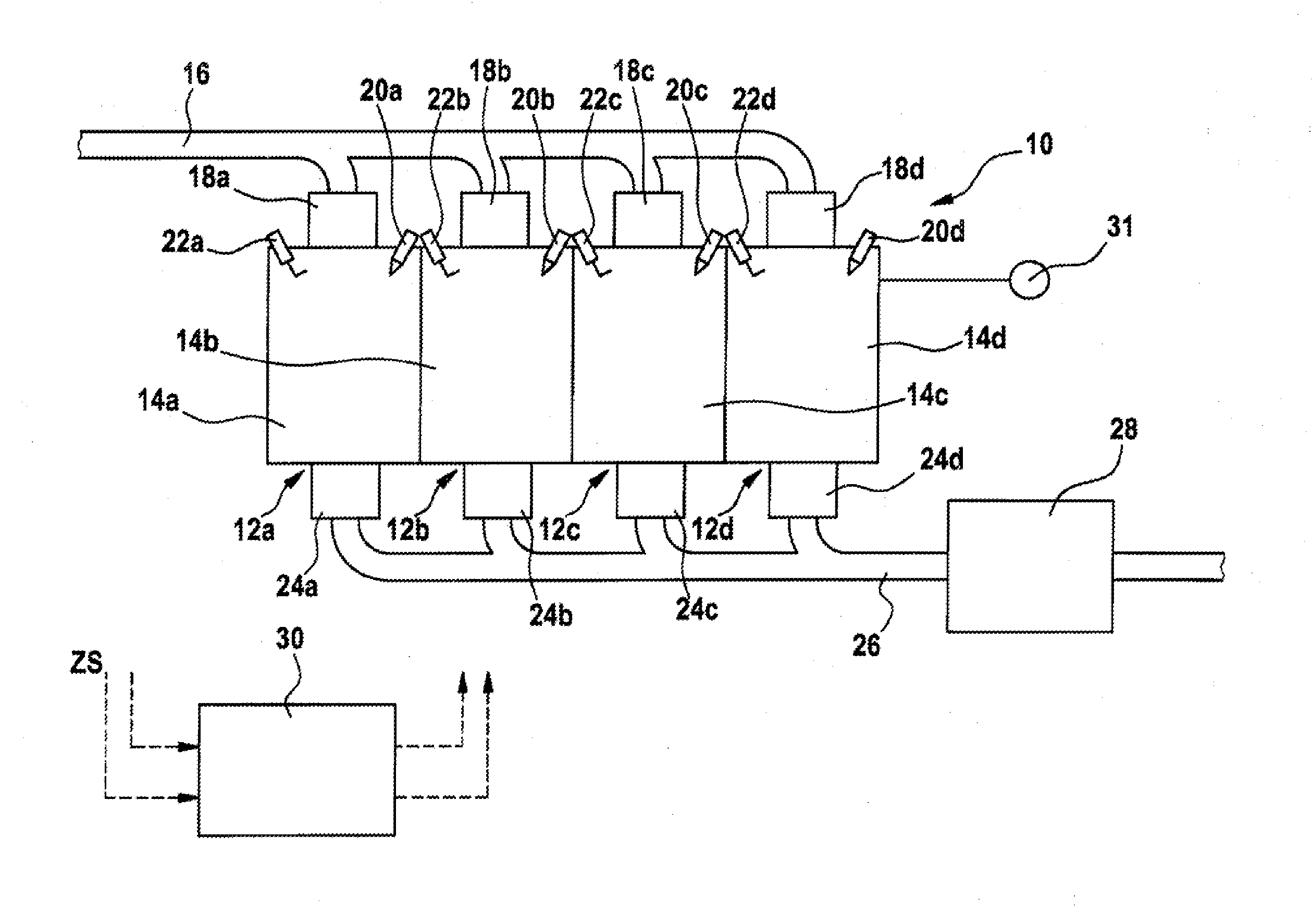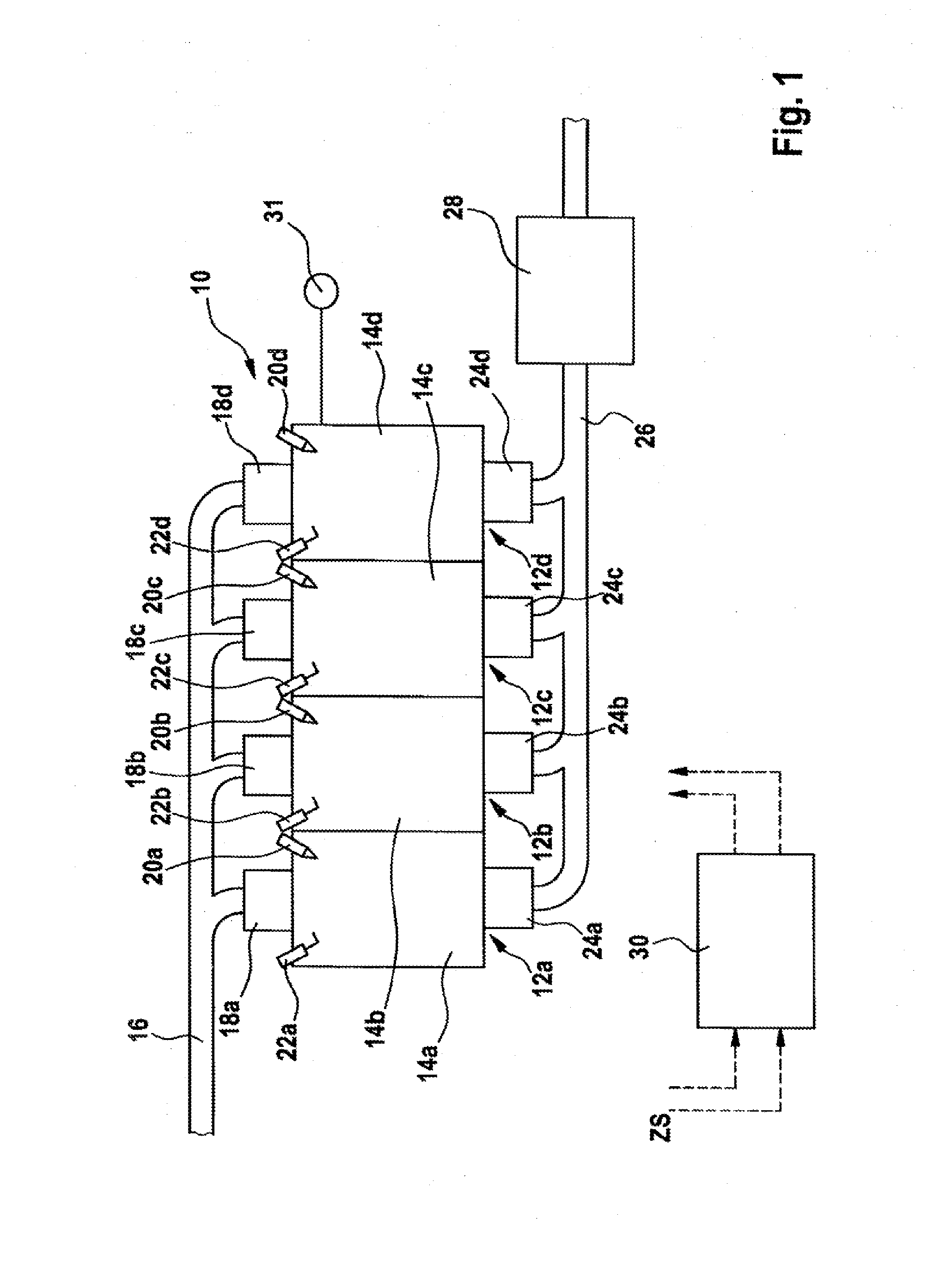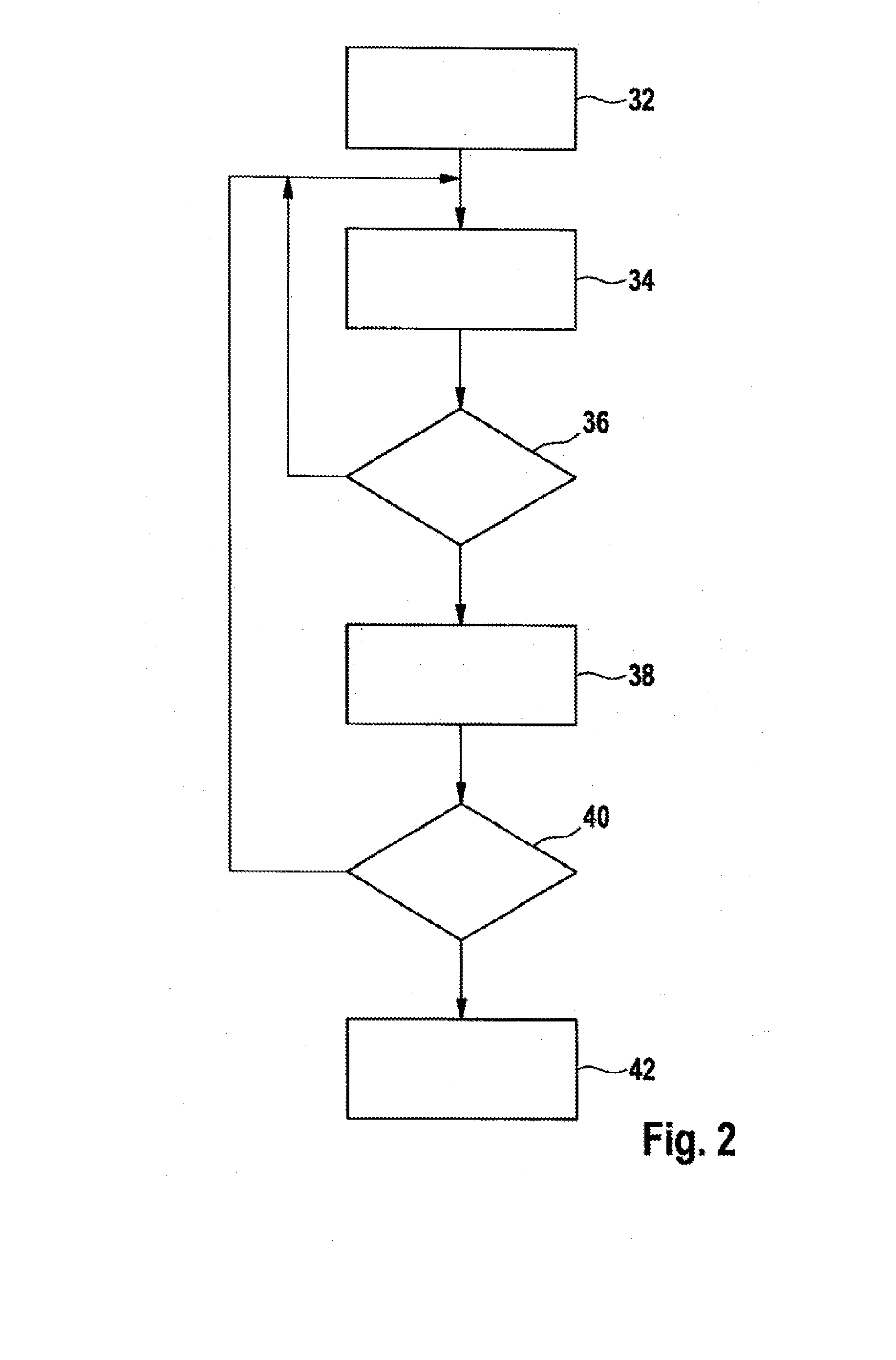Method and device for operating an internal combustion engine
a control device and internal combustion engine technology, applied in the direction of combustion engines, electric control, machines/engines, etc., can solve the problems of unsatisfactory particulate emissions, piston standing shortly before the ignition, and close to the top dead center wet, etc., to reduce particulate emissions, reduce the effect of steady running and reducing particulate emissions
- Summary
- Abstract
- Description
- Claims
- Application Information
AI Technical Summary
Benefits of technology
Problems solved by technology
Method used
Image
Examples
Embodiment Construction
[0017]In FIG. 1, an internal combustion engine is designated overall by reference numeral 10. It is used to drive a motor vehicle, not shown, and includes four essentially identical cylinders 12a to 12d having four combustion chambers 14a to 14d. Each combustion chamber 14a to 14d has an intake valve 16a to 16d, which are connected to an intake manifold 18. Via intake manifold 18 and intake valves 16a to 16d, combustion air gets to the respective combustion chamber 14a to 14d. Fuel is injected into combustion chambers 14a to 14d via one injector 20a to 20d, respectively. Injectors 20a to 20d are connected to a rail, not shown, in which fuel is stored under high pressure.
[0018]The fuel / air mixture located in combustion chambers 14a to 14d is ignited by a spark plug 22a to 22d, respectively. The hot combustion gases are led from combustion chambers 14a to 14d into an exhaust gas pipe 26 via outlet valves 24a ro 24d. This leads to catalytic converter system 28, which purifies the exhau...
PUM
 Login to View More
Login to View More Abstract
Description
Claims
Application Information
 Login to View More
Login to View More - R&D
- Intellectual Property
- Life Sciences
- Materials
- Tech Scout
- Unparalleled Data Quality
- Higher Quality Content
- 60% Fewer Hallucinations
Browse by: Latest US Patents, China's latest patents, Technical Efficacy Thesaurus, Application Domain, Technology Topic, Popular Technical Reports.
© 2025 PatSnap. All rights reserved.Legal|Privacy policy|Modern Slavery Act Transparency Statement|Sitemap|About US| Contact US: help@patsnap.com



